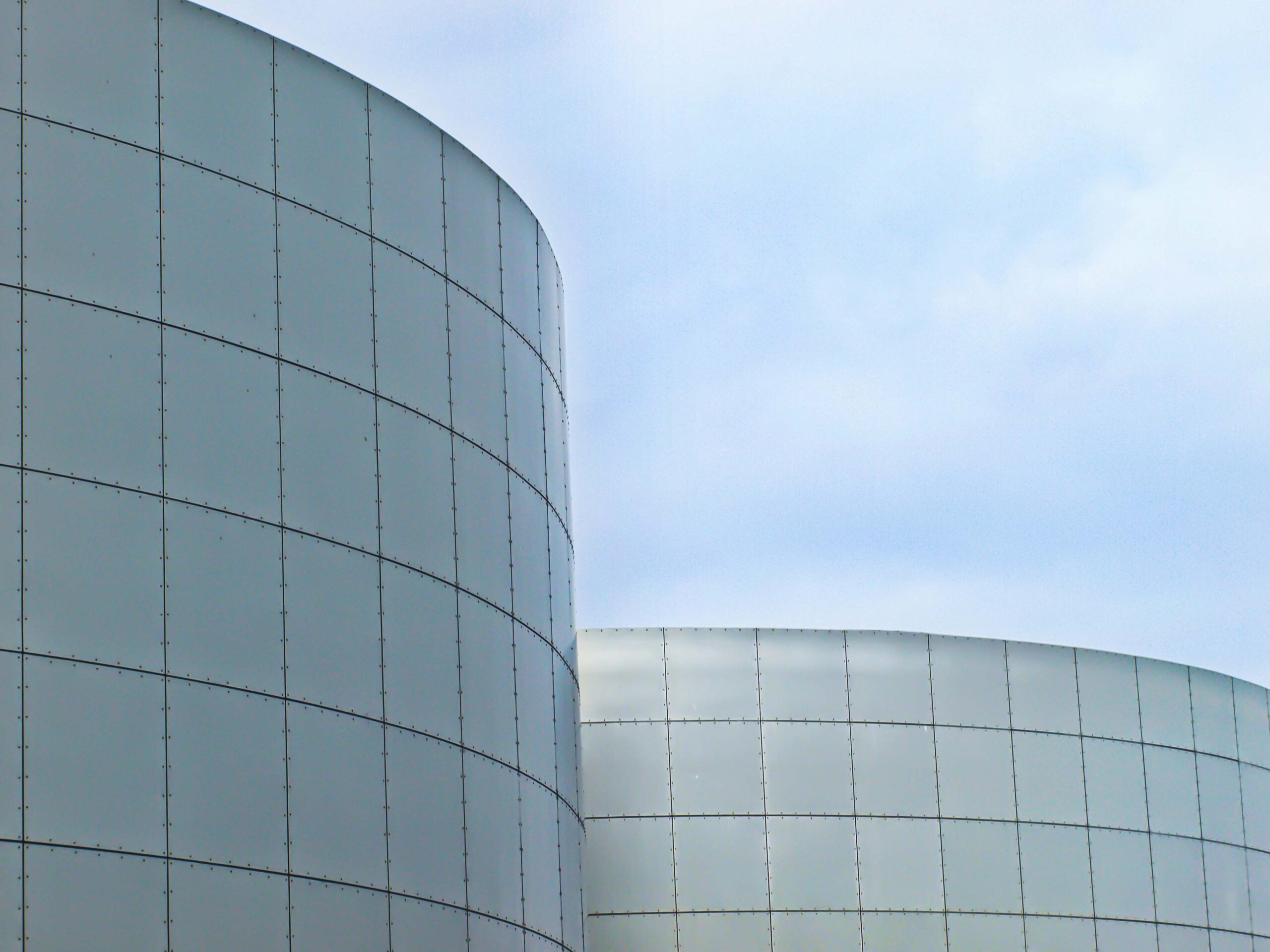Exploring Advancements in Metal 3D Printing Tech
The worldwide sector for 3D additive metal is predicted to escalate to $7.9 billion by 2028. This rapid growth is propelled by substantial advancements in metal 3D printing tech. These innovations are redefining how we produce intricate pieces and structures. Industries such as aerospace and healthcare are at the forefront, leveraging 3D printing alloy to create complex, customized components with unmatched accuracy.
This piece examines the cutting-edge methods driving this shift. It highlights how metal 3D printing is fundamentally altering manufacturing methods. By examining these breakthroughs, we learn into the trajectory of production and the vast capability of this innovation.
Grasping Metal 3D Printing
Metal 3D printing is transforming the manufacturing field by enabling the fabrication of complicated alloy parts with unequaled accuracy and versatility. This tech facilitates for the incremental building of intricate components, offering notable advantages over traditional methods.
What is Alloy 3D Printing?
Metal 3D printing, or metal 3D printing, utilizes diverse methods to produce metal components. A 3D printer alloy printer functions by depositing substance layer by layer, straight from digital models. This process enables the production of complicated geometries and personalized patterns.
The History of Alloy 3D Printing
The development of metal 3D printing began in the late 1900s with pioneering prototypes of rudimentary patterns. Over time, developments have broadened its potentials, transitioning from rudimentary prototypes to cutting-edge parts. Today, metal 3D printing is utilized in aviation, automotive, and healthcare industries, because of ongoing innovation.
Key Gains of Alloy 3D Printing
Employing a alloy 3D printer offers various gains over conventional manufacturing processes. These comprise:
- Flexibility: The capacity to produce intricate geometries and detailed forms that conventional techniques cannot achieve.
- Minimized Scrap: Alloy 3D printing uses substance efficiently, reducing scrap during the fabrication technique.
- Customization: Easily manufacture personalized components, allowing rapid prototyping and customized outcomes across diverse uses.
- Velocity: Faster manufacturing durations from idea to end product, optimizing the production process.
These advantages make alloy 3D printing a attractive solution for companies seeking to innovate and improve their manufacturing capabilities.
The Progression of Alloy 3D Printing Technologies
The progression of metal 3D printing has been truly extraordinary, transitioning from rudimentary starts to the advanced technologies we now observe. This progression has focused on improving the intricacy of *metal 3D printed components*, optimizing the use of *3D printing metal powder*, and broadening the scope of *metal 3D printing provider* businesses.
Initial Innovations
At its beginning, metal 3D printing was defined by trial methods and a narrow range of matter. The initial significant innovations were selective laser melting and electron beam fusion. These techniques paved the way for more consistent production of metal components. Early practitioners utilized these technologies to create intricate shapes that classical production processes couldn’t manage.
Current Technological Trends
Today, the advancements in metal 3D printing are revolutionizing fabrication. The concentration is on speeding up production techniques, optimizing material properties, and reducing expenses. The development of advanced *3D printing metal powder* has allowed to create strong and accurate *metal 3D printed pieces*. Furthermore, the increase of *metal 3D printing provider* businesses has turned advanced production accessible to firms of all sizes.
Powder Bed Fusion Technologies in Metal 3D Printing
Powder Bed Fusion technologies have transformed metal 3D printing, delivering excellent accuracy and exceptional substance compactness. This technique uses a electron beam to fuse fine alloy powders, including the advanced alloy powder bed fusion technique. It excels at producing complex shapes that conventional manufacturing techniques cannot accomplish.
Two primary PBF methods are prominent: Laser Sintering and DMLS. Each delivers specific gains and is essential in fields like space, vehicle, and medical production.
- SLM: Using a intense light source, it entirely binds the alloy particles, creating parts with excellent physical characteristics.
- DMLS: This technique employs a beam to selectively fuse material particles, ideal for producing pieces with intricate internal geometries and high precision.
DMLS is favored for complex patterns and swift prototype creation, guaranteeing effectiveness without sacrificing quality. Despite Powder-Based Fusion methods present substantial prices and longer fabrication speeds, their precision and material utilization are fueling their use across sectors.
Here is a comprehensive analysis:
| Factor | SLM | Direct Metal Laser Sintering |
|---|---|---|
| Laser Specification | Powerful laser | Fiber laser |
| Material Use | High | Moderate to High |
| Usage Flexibility | Extremely versatile | Exceptionally adaptable |
| Key Industries | Aerospace, Vehicle, Medicine | Aviation, Car, Medical |
| Standard Materials | Al, Titan, Steel | Aluminium, Titan, Alloy Steel |
Both alloy powder bed fusion technologies are evolving, guaranteeing improved effectiveness and substance potential. As technology progresses, the promise of PBF in metal 3D printing is expected to grow, driving advancement across various fields.
Applications of SLM
Laser Sintering has revolutionized the metal 3D printing field, delivering unequaled accuracy and versatility. It facilitates the production of complicated constructions with effortlessness. This part explores how Selective Laser Melting is utilized across different fields, showcasing its significant effect.
Laser Sintering in Aviation Industry
In aviation, SLM is vital for producing complex engine pieces such as rotor blades and fuel tips. It facilitates for substantial weight savings while ensuring structural integrity. This results in improved and less heavy aircraft.
By enhancing fuel efficiency and lowering emissions, SLM aligns with green initiatives in the aviation field.
Uses in Medicine of Selective Laser Melting
The medical sector greatly gains from Selective Laser Melting, especially in producing tailored implants and artificial limbs. Doctors can now develop devices personalized to individual patients, providing a enhanced compatibility and performance. This leads to improved medical outcomes.
Personalized prosthetics, such as those for bone and dental needs, are created to fit the specific body of each individual. This highlights the adaptability of metal 3D printing in improving healthcare.
| Field | Uses | Gains |
|---|---|---|
| Space | Engine components, turbine blades, fuel injectors | Weight reduction, improved fuel efficiency, enhanced operation |
| Medical | Custom implants, prosthetics | Custom healthcare solutions, enhanced comfort and functionality, shorter healing period |
Gains of Electron Beam Fusion
Electron Beam Fusion is a advanced process in metal 3D printing. It utilizes a concentrated electron ray to melt alloy particles in a vacuum. This method delivers several key advantages.
Decreasing Oxidation:
One major benefit of Electron Beam Melting is its vacuum operation, which greatly decreases oxidative degradation. This is essential for materials like Titan and its compounds. These are vital in aerospace and medical applications due to their susceptibility.
Augmented Substance Traits:
Functioning in a vacuum chamber not only keeps the alloy pure but also improves its material traits. Electron Beam Melting-produced components often exhibit improved structural strength and endurance. These characteristics are crucial for implementations under high stress.
Detailed Design Possibilities:
Electron Beam Melting is proficient in producing detailed layouts and intricate forms. The accuracy of the electron beam allows detailed and tailored parts. This is beyond what classical manufacturing can achieve.
| Factor | Advantage |
|---|---|
| Oxidation Reduction | Reduced oxidation because of operation in a vacuum |
| Substance Purity | Enhanced due to vacuum operation |
| Material Traits | Improved structural strength and fatigue resistance |
| Design Adaptability | Capability to manufacture intricate and tailored pieces |
EBM’s employment of electron beams in a vacuum chamber leads to excellent alloy pieces. These pieces have reduced material oxidation and superior material traits. This makes EBM vital in fields demanding accuracy and strength, such as aerospace and medicine device fabrication.
Trailblazing DMLS
Direct Metal Laser Sintering has transformed the alloy 3D printing field. It utilizes a intense light source to fuse metallic powder layer by layer, manufacturing complex pieces without traditional molds. This process is notable for its accuracy and effectiveness.
Material Requirements for DMLS
For DMLS, alloys must fulfill precise requirements for peak performance. Key alloys include Al, Titan, stainless steel, and cobalt-chrome compounds. These substances require fine powder consistency, enhanced thermal properties, and extreme heat resistance to tolerate the intense light energy.
- Uniform Powder: The material powder must be uniformly sized and shaped for precise binding.
- Temperature Traits: Materials must efficiently conduct and conduct thermal energy to fuse and harden correctly.
- High Melting Points: Guaranteeing strength during the fusion process avoids flaws.
Comparison between DMLS and Traditional Manufacturing
When contrasting DMLS to traditional production, Direct Metal Laser Sintering provides obvious gains. It can create intricate shapes, minimize material waste, and greatly reduce manufacturing times. For complex designs and prototypes, Direct Metal Laser Sintering delivers unmatched adaptability and accuracy.
| Aspect | Direct Metal Laser Sintering | Classical Manufacturing |
|---|---|---|
| Intricate Shapes | Superior | Constrained |
| Waste | Reduced | Substantial |
| Manufacturing Duration | Rapid | Lengthy |
| Customization | Highly Flexible | Constrained |
By adopting Laser-Based Sintering, sectors can unlock significant gains and improvements in product development and manufacturing. This tech is paving the way for a modern era of innovation.
Outlook of DED
Looking ahead, DED is likely to change production. Its potential for rapid material placement and the ability to improve or restore components indicates a significant change. This tech is likely to profoundly influence industries like heavy industry and electricity.
Direct Energy Deposition enables the repair of components that have degraded, thus prolonging the durability of essential equipment. This is particularly advantageous in fields relying on industrial machines, where substitute components can be both time-consuming and expensive.
The flexibility of Direct Energy Deposition in processing multiple metals makes it a optimal option for tailored production outcomes. It provides accuracy and productivity to the procedure, unlocking innovative routes in product creation and design.
Here’s a comprehensive analysis of the gains Direct Energy Deposition delivers in various sectors:
| Field | Gains from Energy-Based Deposition |
|---|---|
| Industrial Production | High deposition rates, restoration and repair abilities |
| Electricity | Upkeep, extension of part lifespan, and cost savings |
| Space | Bespoke fabrication, reduced-weight parts, exactness |
| Medicine | High precision, biocompatible materials, swift prototype creation |
In summary, the progress in DED heralds a positive prospects. It guarantees to enhance manufacturing efficiency and improve material optimization, placing Direct Energy Deposition at the cutting edge of fabrication innovation.
Metal 3D Printing Innovations in Vehicle Manufacturing
Alloy 3D printing is revolutionizing the automotive industry, offering innovative advancements to vehicle engineering and fabrication processes. This technology facilitates the creation of customized pieces, transforming conventional production processes.
Impact on Vehicle Design
Automotive designers now leverage metal 3D printing to produce intricate and reduced-weight frameworks. This flexibility enables the production of distinct components that boost auto performance and aesthetics. Significantly, complex geometries that were once impossible or high-priced are now possible.
Boosts in Fabrication Productivity
3D printing innovation substantially improves production productivity in the car sector. It cuts the requirement for multiple fabrication phases, streamlining production lines and reducing waste and manufacturing periods. Moreover, quick model development is facilitated, permitting speedier revisions and faster product launch for new designs.
The benefits of 3D printing in car parts are evident: boosted precision and reduced substance utilization. These gains lead to notable cost savings and production effectiveness across the sector.
Jetting Process: A Pivotal Leap in Alloy Additive Manufacturing
Binder Jetting signifies a significant advancement ahead alloy 3D fabrication, offering numerous gains for industrial use. This technique, which lays down a 3D printing alloy adhesive sequentially, substantially cuts production time over conventional techniques. Its cost-effectiveness is notable, appealing to fabricators looking for cut expenses without forgoing quality.
Yet, it’s crucial to recognize specific limitations. Early pieces may display lower material integrity and durability. To mitigate this, additional techniques like sintering can be applied. These steps improve substance traits, matching them with those possible through other metal 3D printing methods.
Despite these compromises, Jetting Process’s gains, notably in terms of speed and cost, are notable. By integrating a 3D printing metal binding agent into their processes, companies can attain considerable productivity. This turns them at the leading edge of fabrication innovation.
Expansion with Big Metal Additive Manufacturing Machines
Novel large format metal 3D printing machines are revolutionizing the manufacturing of complex, big components across fields. These printing machines deliver significant potential but also introduce unique hurdles. Overcoming these obstacles is essential to entirely exploit their capabilities.
Challenges of Large Format Printing
One major obstacle with large format alloy 3D printing machines is maintaining exactness over large volumes. As printed items increase in size, ensuring consistent accuracy and strength becomes more complicated. Longer print times for large components also present variables that affect the fabrication method.
- Accuracy and Exactness: Ensuring precision over bigger spaces is challenging, often needing sophisticated adjustment and monitoring techniques.
- Print Speed: Larger items need more duration to print, which raises the likelihood of errors and the requirement for enhanced monitoring techniques.
- Material Processing: Managing the large quantities of alloy particles or filament needed for these printed items presents organizational obstacles in substance storage and handling.
Sectors Gaining from Large-Scale Printing
Various industries will greatly gain from large format alloy 3D printing machines, notably those requiring large, intricate components. The potential to 3D print massive items on-demand provides substantial organizational and financial gains.
| Field | Advantages | Applications |
|---|---|---|
| Building | Reduced lead times, Tailoring | Construction parts, Building frameworks |
| Naval Architecture | Local fabrication, Financial effectiveness | Hull sections, Engine components |
| Energy | Long-lasting component fabrication, Shorter idle periods | Pipeline connections, Drilling equipment |
These illustrations showcase the wide capabilities uses of large format metal 3D printing devices across diverse fields. As tech progresses, it will be interesting to observe how 3D fabricating large components will further revolutionize these sectors.
Advancements in Materials in Alloy 3D Printing
The alloy 3D fabrication sector is evolving swiftly, propelled by advancements in materials. Innovative material granules and combinations are leading this development, greatly enhancing the technology’s capabilities and applications. Worldwide businesses are channeling resources into innovation to reveal novel substances for multiple industrial uses.
A notable leap in 3D fabrication materials innovation is the emergence of specialized alloys. These materials boast enhanced robustness, heat tolerance, and corrosion resistance. Such breakthroughs are crucial for sectors like aviation, vehicle, and medical industry, where robustness and operation are paramount. Furthermore, personalizing these alloys for particular demands provides unequaled flexibility and productivity in fabrication.
To highlight the range and gains of advancements in materials in metal 3D fabrication, consider the comparison below, which outlines major advancements and their applications:
| Advancement in Materials | Notable Traits | Industry Applications |
|---|---|---|
| Titanium Alloys | Low weight, enhanced robustness, anti-corrosion properties | Space, healthcare devices |
| Nickel-Based Mixtures | High-temperature resistance, strength | Energy production, car, aviation |
| Aluminium-Based Compounds | Lightweight, high corrosion resistance | Automotive, space |
| Alloy Steel | Strength, toughness, corrosion resistance | Medical devices, food production, car |
These illustrations demonstrate the profound influences of material innovations on 3D printing metal development. As these developments evolve, they are expected to revolutionize classical fabrication, enabling intricate shapes and customized material properties.
Personalized Alloy Components: Changing Fabrication
The capacity to manufacture custom metal parts through 3D printing is transforming fabrication. This tech offers unparalleled 3D additive manufacturing personalization capabilities. It allows fields to manufacture intricate layouts and customized components easily.
Customization Capabilities
3D printing customization delivers a major gain by allowing parts personalized to individual needs. Unlike traditional processes, 3D printing allows for rapid prototyping and modifications. This adaptability is vital for fields requiring precision and uniqueness in their pieces.
- Creativity: 3D additive manufacturing enables complex geometries and detailed designs that are hard to accomplish with conventional techniques.
- Rapid Prototyping: Facilitates swift movement from idea to model, leading to quicker versions and a decreased product launch duration.
- Expense-Efficient Manufacturing: Lowers waste and substance expenses by manufacturing only what is demanded.
Industries Utilizing Custom Metal Parts
Multiple sectors are utilizing tailored metal parts through 3D additive manufacturing personalization to boost their outcomes and processes:
- Medicine: Custom metal pieces are utilized to produce personalized prosthetics and prosthetics, improving comfort and compatibility.
- Automotive: Manufacturers use 3D printing to create reduced-weight, robust parts that enhance vehicle efficiency and energy economy.
- Retail Goods: Businesses can create bespoke goods tailored to particular preferences, providing a distinct selling point to customers.
The adoption of custom alloy components and 3D fabrication tailoring is driving various industries into a novel age of manufacturing innovation and productivity.
Financial Effects of Metal 3D Additive Manufacturing Service Businesses
Alloy 3D fabrication services are changing production with their versatility and expense reduction. They significantly cut down on capital and lead times, typical in conventional fabrication. This enables the quick and affordable fabrication of complicated metal parts, speeding up innovation cycles.
One major benefit of alloy 3D additive manufacturing is its minimized waste. Classical techniques often result in notable scrap. In contrast, 3D printing adds substance sequentially, minimizing material loss. This not only cuts fabrication expenditures but also has a positive environmental impact.
Financial gains are another advantage, thanks to the ability to create parts on demand. This approach eliminates the demand for big warehouses, liberating capital for other ventures. It’s particularly advantageous for industries needing personalized or limited-run parts, like aviation and medicine sectors.
The economic impact of metal 3D fabrication also involves employment. As need for these offerings expands, so does the requirement for trained workers. These positions encompass operating 3D printers, managing post-processing, and supervision. This expansion boosts the job market and aids in monetary progress.
These benefits are evident when contrasting conventional production to metal 3D additive manufacturing:
| Factor | Traditional Manufacturing | Metal 3D Printing |
|---|---|---|
| Initial Funding | Substantial | Minimal |
| Production Duration | Extended | Short |
| Material Loss | Significant | Minimal |
| Personalization | Constrained | Extensive |
The financial influence of metal 3D additive manufacturing is also observed in its competitive advantage. Companies employing these solutions can quickly launch items to customers, responding quickly to customer preferences and trends. This agility is crucial in today’s rapidly changing marketplace.
The growth of metal 3D fabrication services is transforming economic models, allowing more effective, cost-effective, and creative fabrication methods. As this innovation advances, its economic impact will set to expand, additionally reshaping manufacturing techniques and market dynamics.
Eco-Friendly Approaches in Metal Fabrication
The move towards green methods is crucial in today’s rapidly changing production environment. Alloy 3D printing champions this transformation, providing methods that greatly reduce material loss and energy use. It allows a more productive resource utilization, from creation to item disposal.
One significant benefit of metal additive manufacturing is its minimized waste. Classical approaches often produce notable scrap, discarding excess material to create the end result. Sustainable 3D printing, however, builds items incrementally, using only what’s required. This method conserves materials and makes the fabrication technique greener, with less ecological footprint.
Fuel economy is crucial for manufacturers aiming to go green. Alloy 3D printing processes tend to be more fuel-economical than traditional methods. The exactness of eco-friendly fabrication cuts down on the demand for several manufacturing stages, thus lowering power consumption. Additionally, in-situ manufacturing with metal fabrication machines can lower the ecological footprint from shipping and distribution, improving environmental sustainability.
Conclusively, alloy 3D printing is paving the way for a green industrial future. By embracing sustainable 3D printing, industries can innovate while saving the earth. As this innovation advances, it promises even more efficiency and a minimized ecological impact. This emphasizes the need for these methods in current fabrication.



